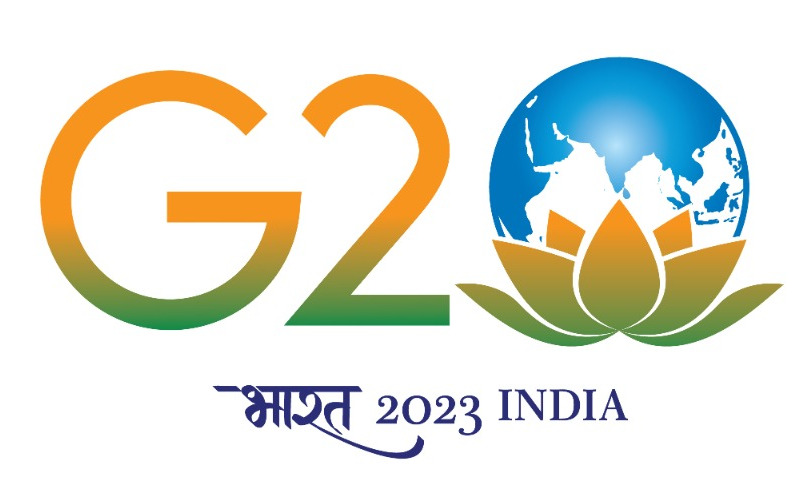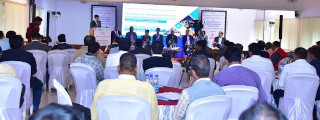Brief Overview of Textile Sector
Indian textile and apparel industry contributes ~2% to the national GDP and 7% of industry output in value terms. India accounts for ~4% of the global trade in textiles and apparel. In 2020-21, textiles, apparel & handicrafts together accounted for ~11.5% of India’s total exports. The domestic textiles & apparel industry stood at GBP 130 bn in 2021. Indian textiles and apparel industry employs 45 million people directly and 100 million people in allied industries, making it the 2nd largest industry by manpower. The textile industry in India includes a wide range of segments – from traditional handloom & handicrafts to cotton, wool & silk, and the ‘organized textile industry’. The organized textile industry is marked by its use of capital-intensive technology for mass production and includes apparel manufacturing, spinning, weaving, processing, etc.
Cotton production in India is projected to reach 7.2 million tonnes (~43 million bales of 170 kg each) by 2030 driven by increasing demand from consumers. Thehandicraft exports from India too are expected to rise YoY due to increased participation from industry players to boost handicraft products in the global market.
Manufacturing Process & Energy Consumption
There are broadly three manufacturing processes, spinning, weaving and processing. A particular unit can be either composite covering all the three processes or a unit just covering one process such as spinning.
- Spinning Process: In the spinning process, raw cotton is converted into yarns in several steps which includes blow room, carding, drawing, rowing, spinning, sizing and weaving, desizing, scouring, bleaching, calendaring, dyeing and printing.
- Weaving Process: Weaving is the process of making fabric or cloth using the yarns. In it, two distinct sets of yarns called the warp and the filling or weft are interlaced with each other to form a fabric. Yarn is a long continuous length of interlocked fibres. The lengthwise yarns which run from the back to the front of the loom are called the warp. The crosswise yarns are the filling or weft. A loom is a device for holding the warp threads in place while the filling threads are woven through them. The sub-processes which are usually involved in weaving include warping, sizing, reeding, weft prim winding, weaving, shearing, folding, and packing.
- Processing: It covers all processes in a textile unit that involve some form of wet or chemical treatment. The wet processing process can be divided into three phases: preparation, coloration, and finishing. It uses different types of technologies depending on the type of yarn or fabric that are dyed. Jigger, winch padding, mangle and jet-dyeing are some of the important dyeing machines. Similarly, there are different types of printing: direct printing, warp printing, discharge printing, resist printing, jet printing, Rotary printing etc.
Energy use in a textile mill depends upon the deployed process. For spinning and weaving mills, electricity is the main source of energy whereas for process houses, both electrical and thermal energy are needed, thermal constituting the major source. In an integrated mill, almost 80% of the total energy need is thermal. Typical break up of electricity and thermal energy consumption for an integrated mill is shown in below table:
| Electricity Consumption | Thermal Consumption | ||
| Areas | % | Areas | % |
| Spinning Preparatory | 13 | Boiler Loss | 25 |
| Ring frame | 28 | Steam Distribution Loss | 10 |
| Weaving | 18 | Bleaching & Finishing | 35 |
| Humidification | 19 | Dying and Printing | 15 |
| Processing | 10 | Humidification & Sizing | 15 |
| Others | 12 | ||
Energy consumption in a spinning mill is primarily electricity used in the production machineries and auxiliaries. In weaving process, energy is used for operating machines, air conditioning and illuminating the area where fabrics are manufactured. In addition to these, compressors, which provide compressed air to the weaving line, use energy. Electricity is used for machines, air conditioning, illumination and compressors, while thermal energy is consumed by processes such as sizing and sometimes by air conditioning.
PAT Scheme for Textile Sector
The Textile sector is one of the designated sectors covered under the BEE’s Perform, Achieve and Trade scheme. The Textile industry in India can be classified into organized and decentralized/ rural sectors. The organized sector comprises mills which include both spinning mills and composite mills. The decentralized power-loom/ hosiery and knitting sector form the textile industry's largest section.
In the Indian textile sector, a unit with an annual consumption of over 3,000 tonnes of oil equivalent (TOE) is notified as a designated consumer (DC) under the Energy Conservation Act, 2001. PAT Cycles wise number of DCs, their total energy consumption (Million TOE) and energy savings targets (Million TOE) of the Textile Sector are presented below:
| Cycles | No. of DCs | Total Energy Consumption (Million TOE) |
Energy Saving Targets (Million TOE) |
|---|---|---|---|
| PAT Cycle I | 90 | 1.2 | 0.13 |
| PAT Cycle II | 99 | 1.48 | 0.088 |
| PAT Cycle III | 34 | 0.668 | 0.04 |
| PAT Cycle IV | 7 | 0.342 | 0.0204 |
| PAT Cycle V | 16 | 0.2267 | 0.0135 |
| PAT Cycle VI | 7 | 0.112 | 0.007 |
| PAT Cycle VII | 120 | 1.92 | 0.099 |
| PAT Cycle VIII | 38 | 0.5618 | 0.0334 |
Energy Savings Achievement in the Textile Sector under PAT Cycle I and PAT Cycle II are 0.13 Million TOE and 0.136 Million TOE respectively.
Best Practices Adopted by Textile Sector
Textile industries have adopted the following key operational best practices and technologies as part of their Industrial Energy Efficiency and Decarbonisation (IEED) measures:
- Waste heat recovery from PV motex stenter.
- Installation of a Low-pressure Air compressor with a Heat Recovery unit.
- Installation of Flash jet recovery system.
- Installation of VFD in Weaving chiller Cooling tower Fan.
- High-pressure mist spray system at AWT.
- Use of Removable reusable insulation.
- Pulser dyeing technique.
- Microbial fuel cells technology to generate electricity from textile wastewater treatment.
- Energy recovery from H-plant exhaust air by providing a special turbine which generates electricity to be used for lighting purpose.
Details of Line Ministries
Details of Specialised Organization / Research Institute
- Ahmedabad Textile Industry’s Research Association (ATIRA), Gujarat
- Bombay Textile Research Association (BTRA), Mumbai
- South India Textile Research Association (SITRA), Coimbatore
- Man-made Textile Research Association (MANTRA), Gujarat
- Northern India Textile Research Association (NITRA), Ghaziabad
- Indian Jute Industries Research Association (IJIRA), Kolkata
- Wool Research Association, Thane
Details of Industrial Associations
List of Key Technologies
- Various Dyeing processes such as Pulser Dyeing Technique, Airflow Dyeing Technology, Digital Dyeing, and Supercritical CO2 Dyeing Technique.
- Technological processes such as Ultrasonic Assisted Wet Processing, and Closed condensate recovery pump.
- Wind recovery turbine from humidification exhaust Microbial fuel cells technology to generate electricity from Textile wastewater treatment.
- Energy Recovery from H-Plant exhaust air by providing a special turbine which generates grid-connected electricity to be used for lighting purposes.
- Clean-tech digital textile manufacturing solutions.
- Ultrasonic Assisted Wet Processing
- Supercritical CO2 Dyeing Technique
List of EE and Decarbonisation Technologies and Solutions (National & International)



